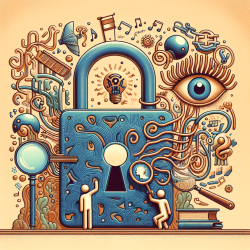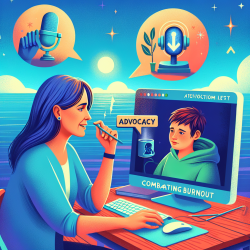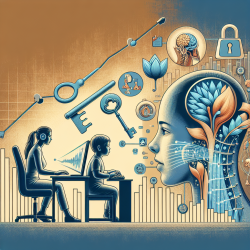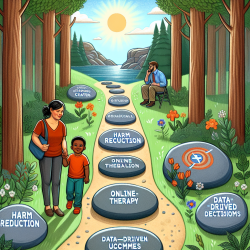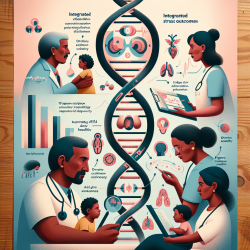As a Special Education Director, you understand the importance of staying informed about the latest research and strategies to support students with diverse needs. A recent study titled "The Effect of Dysfluencies on Attention in Stutterers and Non-Stutterers" offers valuable insights that can help practitioners like you improve their skills and approaches. This blog will summarize the key findings of the study and provide actionable steps to implement these insights in your practice.
Key Findings from the Study
The study, conducted by Yovetich, Booth, and Tyler (1977), explored how dysfluencies (such as stuttering) affect attention in both stutterers and non-stutterers. The researchers used a dichotic listening task, where participants were asked to shadow (repeat) a message in one ear while ignoring a competing message in the other ear. The tasks were divided into two types:
- Task A: Both the shadowed and non-shadowed messages were fluent.
- Task B: The shadowed message was fluent, but the non-shadowed message contained dysfluencies.
The results revealed that stutterers made significantly more errors in shadowing when the non-shadowed message was dysfluent compared to when it was fluent. Non-stutterers, on the other hand, showed no significant difference in their performance between the two tasks.
Implications for Practitioners
The findings of this study have several important implications for practitioners working with students who stutter:
- Awareness of Environmental Dysfluencies: Stutterers are more sensitive to dysfluencies in their environment, which can impact their attention and performance. As a practitioner, you can help students develop strategies to manage this sensitivity.
- Customized Therapy Approaches: Understanding that stutterers may react to environmental dysfluencies as if they were their own can inform the development of more personalized therapy plans. Incorporate techniques that address this sensitivity, such as auditory masking or delayed auditory feedback.
- Generalization of Therapy Skills: Ensure that students can generalize the skills they learn in therapy to real-world environments. Create practice scenarios that include both fluent and dysfluent speech to help students build resilience and adaptability.
Encouraging Further Research
While this study provides valuable insights, it also highlights the need for further research in this area. Encourage your team and colleagues to explore additional studies and stay updated on the latest findings. Consider participating in conferences, webinars, and other professional development opportunities to deepen your understanding of stuttering and its impact on attention.
Action Steps for Practitioners
Here are some practical steps you can take to implement the findings of this study in your practice:
- Conduct Listening Exercises: Incorporate dichotic listening tasks into your therapy sessions to help students improve their ability to focus on fluent speech while ignoring dysfluencies.
- Provide Supportive Environments: Create a supportive and low-stress environment for students to practice their speech skills. Reduce the presence of dysfluencies in the environment to minimize distractions.
- Collaborate with Parents and Teachers: Work closely with parents and teachers to ensure that students receive consistent support both at home and in the classroom. Provide them with strategies to create dysfluency-friendly environments.
- Monitor Progress: Regularly assess students' progress and adjust therapy plans as needed. Use data from listening tasks and other assessments to inform your approach.
To read the original research paper, please follow this link: The Effect of Dysfluencies on Attention in Stutterers and Non-Stutterers.
